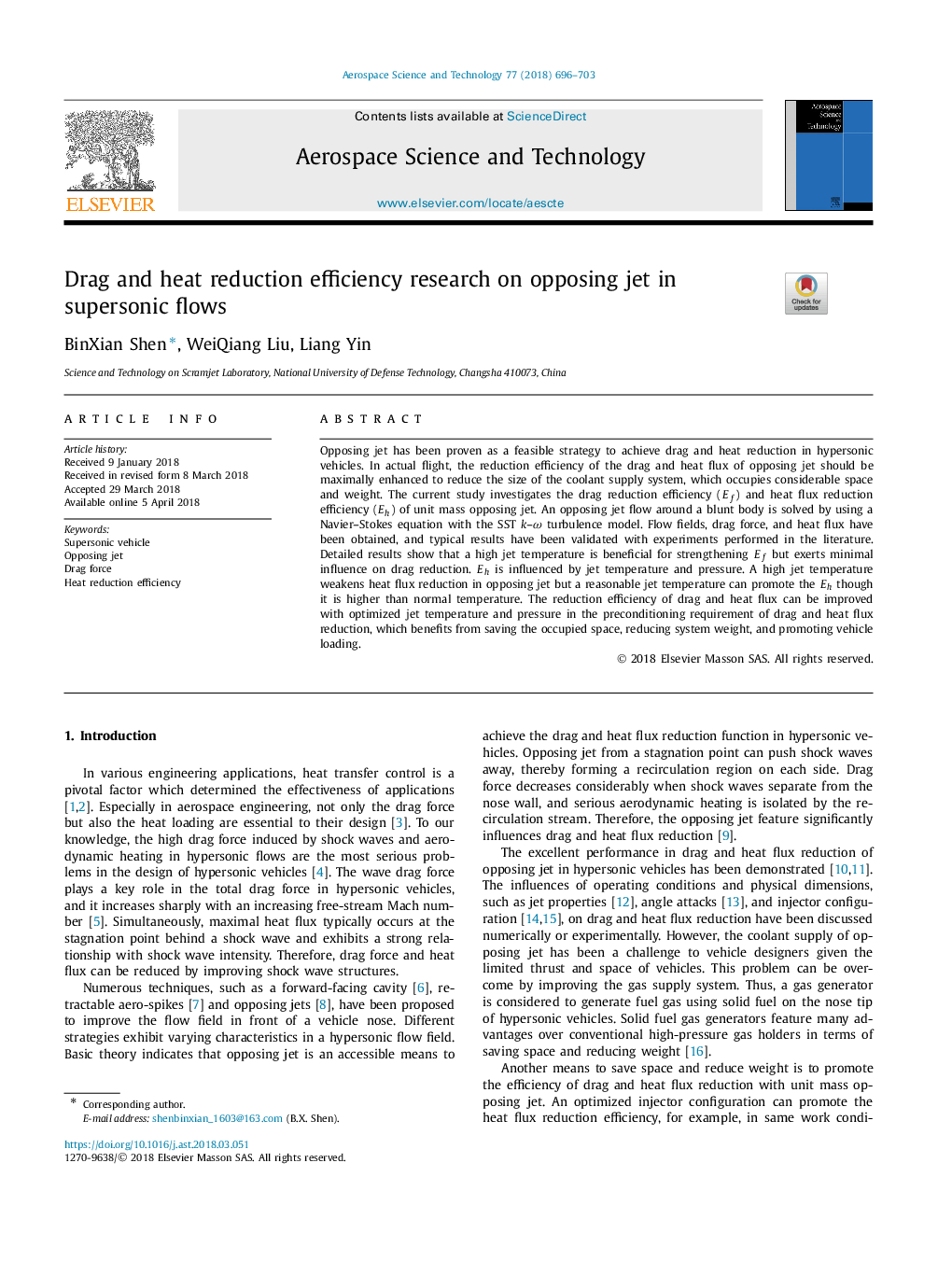| Article ID | Journal | Published Year | Pages | File Type |
|---|---|---|---|---|
| 8057754 | Aerospace Science and Technology | 2018 | 8 Pages |
Abstract
Opposing jet has been proven as a feasible strategy to achieve drag and heat reduction in hypersonic vehicles. In actual flight, the reduction efficiency of the drag and heat flux of opposing jet should be maximally enhanced to reduce the size of the coolant supply system, which occupies considerable space and weight. The current study investigates the drag reduction efficiency (Ef) and heat flux reduction efficiency (Eh) of unit mass opposing jet. An opposing jet flow around a blunt body is solved by using a Navier-Stokes equation with the SST k-Ï turbulence model. Flow fields, drag force, and heat flux have been obtained, and typical results have been validated with experiments performed in the literature. Detailed results show that a high jet temperature is beneficial for strengthening Ef but exerts minimal influence on drag reduction. Eh is influenced by jet temperature and pressure. A high jet temperature weakens heat flux reduction in opposing jet but a reasonable jet temperature can promote the Eh though it is higher than normal temperature. The reduction efficiency of drag and heat flux can be improved with optimized jet temperature and pressure in the preconditioning requirement of drag and heat flux reduction, which benefits from saving the occupied space, reducing system weight, and promoting vehicle loading.
Keywords
Related Topics
Physical Sciences and Engineering
Engineering
Aerospace Engineering
Authors
BinXian Shen, WeiQiang Liu, Liang Yin,
